[Travelogue] Melbourne : Day 1 (3/3) The Shrine of Remembrance | sillyandordinarygirl
By Lasmarya Hadi Purwanto - February 21, 2019
Hi, how's it going? :D
I'm back again with the third part of the day 1 travelogue of my Melbourne trip!
*yeaaaay* *finally* *drumrolls*
Initially, I didn't expect it to be this long, that I have to separate them into three blog posts. I thought I could fit them all in a single post, and then maybe two posts, but apparently I was mistaken! It got too long (maybe because I was too talkative! *oopss*) and it's no longer convenient to read, so yeah, you can thank me later, no worries :P
Anyway, the last part of the day 1 would highlight our visit to the Shrine of Remembrance, or usually known as The Shrine for locals, which is a memorial first built to honor the Victorian men and women who fought in World War I, but is now used to commemorate all Australians who have served in wars. Fyi, Victoria (which was named after Queen Victoria), is a state in south-eastern Australia (the second most populated state in the country, after New South Wales), with Melbourne as its largest city and capital.
To be honest, I didn't know much about the Shrine when we were there. Our Melbourne trip was mostly planned by Diana, so I happily followed her wherever she brought me. :P But writing this blog entry has led me to do some research and eventually came across a lot of fascinating details about this war memorial.
So, as we walked through this path, we were facing the Terrace Courtyard, but we didn't get inside, instead we entered the Shrine from its southern side.
m.jpg.aspx)
m.jpg.aspx)
aerial photograph of the Shrine (south), credited from shrine.org.au
So there are four courtyards built surrounding the Shrine:
(back row) left : the Garden Courtyard
(back row) right : the Entry Courtyard
(front row) left : the Terrace Courtyard
(front row) right : the Student Courtyard

This photo above is the look of the Entry Courtyard taken from the Shrine's lower balcony. Silly me, I first thought it kinda looked like a maple leaf, but in fact, the shape resembles red poppies, which is "the first living thing to grow in the ravaged battle fields of Europe at the end of the First World War" (quoted from the shrine.org.au). Being the eminent feature of one of the most quoted English-language poems written during the WW1, "In Flanders Fields" by John McCrae, the red poppies found its way to be the symbol of dead soldiers. Today, small artificial red poppies (known as remembrance poppies) are worn on the Remembrance Day/Armistice Day (11th November) in Canada, United Kingdom, Australia, and New Zealand, also worn on Anzac Day (25th April) in Australia and NZ. (see? how important the research is? if no, I would still have thought it was maple leaf =.=)


This photo above is the look of the Entry Courtyard taken from the Shrine's lower balcony. Silly me, I first thought it kinda looked like a maple leaf, but in fact, the shape resembles red poppies, which is "the first living thing to grow in the ravaged battle fields of Europe at the end of the First World War" (quoted from the shrine.org.au). Being the eminent feature of one of the most quoted English-language poems written during the WW1, "In Flanders Fields" by John McCrae, the red poppies found its way to be the symbol of dead soldiers. Today, small artificial red poppies (known as remembrance poppies) are worn on the Remembrance Day/Armistice Day (11th November) in Canada, United Kingdom, Australia, and New Zealand, also worn on Anzac Day (25th April) in Australia and NZ. (see? how important the research is? if no, I would still have thought it was maple leaf =.=)
*trivia: Remembrance Day is also known informally as Poppy Day.
If you notice there's writing on the wall, it's written "Lest We Forget" and a quote of Sir William Deane's speech made on ANZAC day 1999, when he was the Governor General of Australia.
Since I didn't pass through the Entry Courtyard to enter the Shrine, so I didn't take picture from the inside. But I really want to show you how it is, so I borrowed the picture from visitmelbourne.com, and as you can see, there's actually an entrance at the end of it, and it leads to the underground Visitor Centre (also accessible from the Garden Courtyard), which connects to the whole underground exhibition, the Galleries of Remembrance, right beneath the Shrine.
photo from VisitMelbourne

(the southern side of the Shrine)
Well, I'm gonna tell you a brief history about the Shrine. *repositioning my glasses* *getting ready to look nerdy* (don't worry, I'll try my best to make it short *wink)
Okay, so when WW1 formally ended in November 1918 (the war ended after an armistice was signed between the Allies and Germany at 5.00 a.m. of 11 November 1918, in which it was agreed that the wars would come to an end "at the 11th hour of the 11th day of the 11th month". Hence, the Remembrance Day is set on 11 November every year, as a memorial day observed in Commonwealth member states), an idea to build a war memorial in Melbourne was proposed.
In the early 1920s, two committees were appointed by the Victorian state government, and the final decision was to build a large memorial monument at the east of St Kilda Road, (which is a major street in Melbourne), "at a position which would make it clearly visible from the center of the city" (wikipedia). In March 1922, a competition was held to find a design for the memorial. And, in 1923, it was announced that two Melbourne architects, who were also WW1 war veterans, Phillip Hudson and James Wardrop won the first prize. (They formed an architecture firm in 1919, and had designed a lot of other buildings in Melbourne ever since, and it is now known as Howden and Wardrop Pty Ltd.)
Okay, so when WW1 formally ended in November 1918 (the war ended after an armistice was signed between the Allies and Germany at 5.00 a.m. of 11 November 1918, in which it was agreed that the wars would come to an end "at the 11th hour of the 11th day of the 11th month". Hence, the Remembrance Day is set on 11 November every year, as a memorial day observed in Commonwealth member states), an idea to build a war memorial in Melbourne was proposed.
In the early 1920s, two committees were appointed by the Victorian state government, and the final decision was to build a large memorial monument at the east of St Kilda Road, (which is a major street in Melbourne), "at a position which would make it clearly visible from the center of the city" (wikipedia). In March 1922, a competition was held to find a design for the memorial. And, in 1923, it was announced that two Melbourne architects, who were also WW1 war veterans, Phillip Hudson and James Wardrop won the first prize. (They formed an architecture firm in 1919, and had designed a lot of other buildings in Melbourne ever since, and it is now known as Howden and Wardrop Pty Ltd.)
Their design of the Shrine was based on the tomb of Mausolus at Halicarnassus,


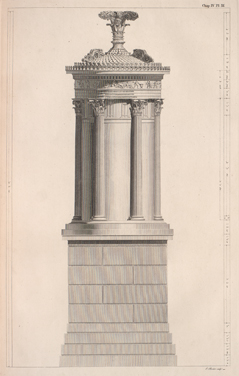


source: wikimedia (circa 1940) published by Shrine of Remembrance Trustees

(the view of the city from the Shrine's Balcony)

(source: wikimedia by Jona Lendering)

(source: wikimedia by Steve Swayne)
with the crowning at the top of the pyramid roof being based on the Choragic Monument of Lysicrates near the Acropolis of Athens.

(source: wikimedia)

The original plan was actually to build a shrine consisted only of a central sanctuary and an ambulatory surrounding it:
(no 10 refers to the Sanctuary and no 11 to the ambulatory)
And as we stepped inside the main building of the Shrine, we were welcomed by this grand Sanctuary:

source : wikimedia
(So, again, I'm gonna be honest that I didn't take picture of the Sanctuary, I don't know why, but I thought I did T.T)
The Sanctuary is the heart of the Shrine, in the centre of which, lies the Stone of Remembrance, made of marble, as a symbol of a gravestone for Victorian service men and women buried overseas and in unmarked graves. It is embedded below the floor so that no hands can touch it, and visitors must bow their heads to read the inscription:

And the very cool thing about the Stone is that it is aligned with an opening in the roof of the Sanctuary, and that on 11 November at exactly 11 a.m. every year, a natural ray of sunlight falls directly on the stone and illuminates the word LOVE, marking the hour and day of the WW1's Armistice! How cool is that?

source: wikimedia (circa 1940) published by Shrine of Remembrance Trustees
The Stone of Remembrance itself is surrounded by sixteen marble columns that are symbols of sentinels and twelve sculptural panels on the Sanctuary wall depicting the armed and medical services at work during WW1.
Oh, and walking along the ambulatory, we could see "forty-two bronze caskets containing the Books of Remembrance with the 89,100 names of all Victorians who served overseas during the First World War (1914-1918)." (shrine.org.au)
The construction of the Shrine began in 1928, completed in 1934, and was formally dedicated on 11 November 1934.

(the view of the city from the Shrine's Balcony)
From the balcony above the Sanctuary, we took the elevator to go down and arrived at the underground Galleries of Remembrance, displaying permanent and temporary exhibitions. The Galleries consists of : The First World War Gallery, Second World War Gallery and Post-1945 Gallery encircling the Crypt.
The Galleries of Remembrance is the latest addition to the Shrine, which was opened on Remembrance Day in 2014. This exhibition area, which comprises 1,600 square metres of undercroft space beneath the Shrine, connects to the Gallery of Medals, the Visitor Center, the Education Center and the Courtyards.
(Private John Charlton Boer War Memorial)
(Gallery of Medals)
(The Second World War Forecourt)
The Forecourt was added to the Shrine to commemorate the service and sacrifice of Victorians in the Second World War when the war ended. The World War II Forecourt is a wide stretch of stone in the shape of a non-denominational cross in front of the Shrine's north face, dedicated in 1954. It includes the Three Flagpoles on the right side of the cross (if you're coming out from the north side of the Shrine), Eternal Flame, and a 12.5-meter cenotaph on the left.

(The Cenotaph and The Eternal Flame)
At the top of the Cenotaph is a sculpture of six service men in the battle dress carrying a bier (a platform or stand for placing people before burial) on which lies a fallen comrade, draped by Australian flag.
The Eternal Flame, representing eternal life for those who have died, was lit by Queen Elizabeth II during the dedication ceremony. The flame has been burning continuously ever since.

Okay, so I know you're confused about the chronology, I am, super confused too when I was writing this blog entry (not the chronology, but how to deliver it). I came across a lot of cool things about the Shrine, and I want to make it easier for you to understand, so I kept changing the orders of the paragraph and this and that, thinking of ways how to make it simpler, but in a way, still feels real, as if you walked into the Shrine yourself and wandered around it with me. Well, I don't know if it's good enough but I hope it is! *fingers crossed
Anyway, I'm still gonna sum up the timeline for you, and here it is!
11 November 1918 : First World War's Armistice signed, ending the war, and initial proposal of building a war memorial in Melbourne
Early 1920s: Committees were formed to carry out the plan
March 1922 : Competition held for the design
December 1923: Winners of the design were announced
11 November 1927: The foundation stone of the Shrine was laid
September 1934:
The construction of the Shrine (with only the Sanctuary and the ambulatory at the time) was completed
11 November 1934: The Shrine was officially opened by Prince Henry, the Duke of Gloucester, witnessed by a crowd of 300,000 people
28 February 1954: The Second World War Forecourt was added to the northern side of the Shrine and was formally dedicated by Queen Elizabeth II
1985: The Remembrance Garden was added on the western side of the Shrine, to dedicate those who served in conflicts after the Second World War.
2002: The new development of the large space underneath the Shrine to provide a visitor's center, administration facilities, and improved access to the Shrine's crypt began. Two new courtyards and the new gallery were built under the northern steps.
2003: The development was completed and opened for public.
2012: The Shrine's undercroft was redeveloped and extended to the south.
11 November 2014: The Galleries of Remembrance was opened.
p.s.: It is highly recommended that the elderly and the disabled enter the Shrine from the Entry Courtyard, through the Visitor Center or from the Education Center (both are step-free), as they provide lift access to the Galleries, the Sanctuary, the Crypt, and unimpeded access to reception facilities, retail shop and public amenities.
The Galleries of Remembrance open daily from 10 am-5 pm, last admission 4.30 pm.
The Services of Remembrance (featuring the Ray of Light) are held every half hour starting 10.30 am in the Sanctuary.
No admission fee.
Shrine tours are available to hire daily at 11 am & 12.45 pm.
More information about the Shrine : https://www.shrine.org.au/home
The Shrine of Remembrance
Birdwood Avenue and St Kilda Road
1.3 km from Flinders Street Railway Station
You can also plan your route from : Public Transport Victoria
Looking back, I wished that I had known more about this war memorial, which is one of the most important monument in Melbourne, so that I would have paid more attention to all the details, instead of just visiting it and didn't understand the meaning behind it. This is also the reason why I tried to give so much explanation (I hope, not too much) through my blog post, although it actually hasn't covered the whole thing about the Shrine, so that YOU, yes, you, can get better insight and if you happen to have a chance to visit the Shrine, you would have a much better experience.
To end it up, I'm happy to get some knowledge and also share it with you.
I do hope you're fascinated as I am. I feel like a student again, but, hey, never stop learning, 'ait?
See you again :D



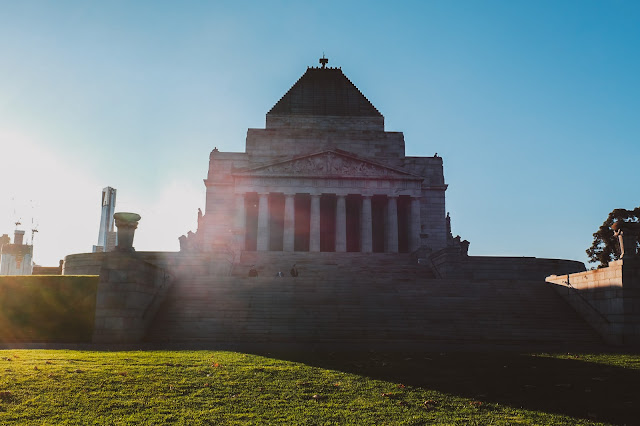
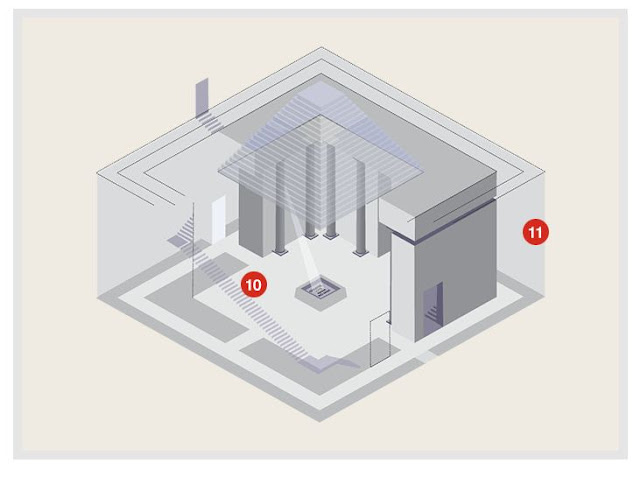

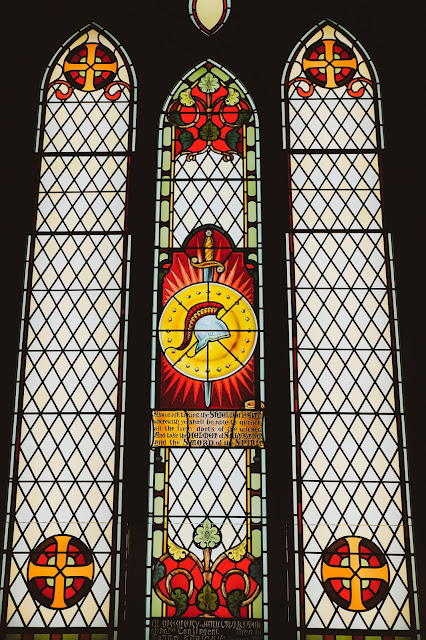
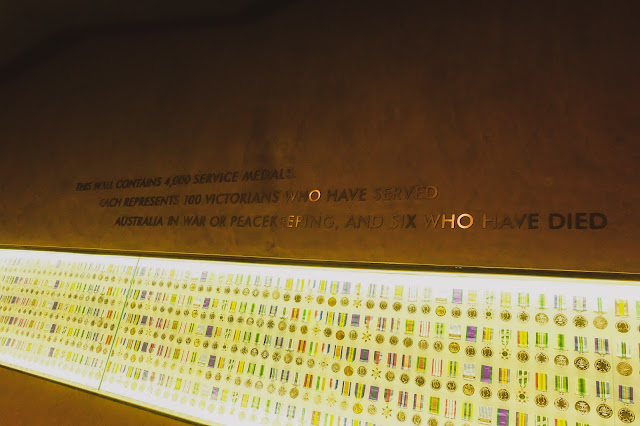

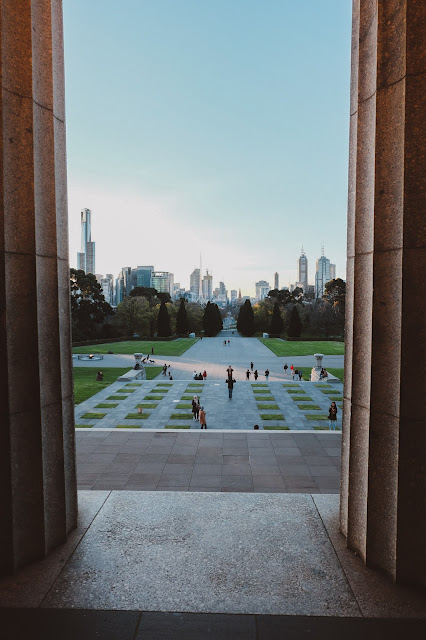






0 comments